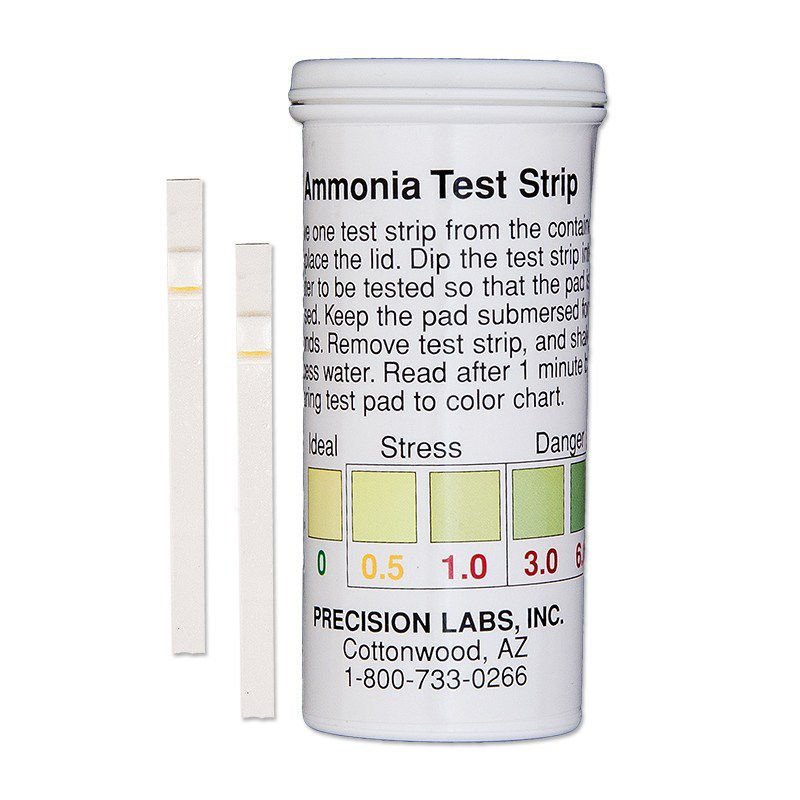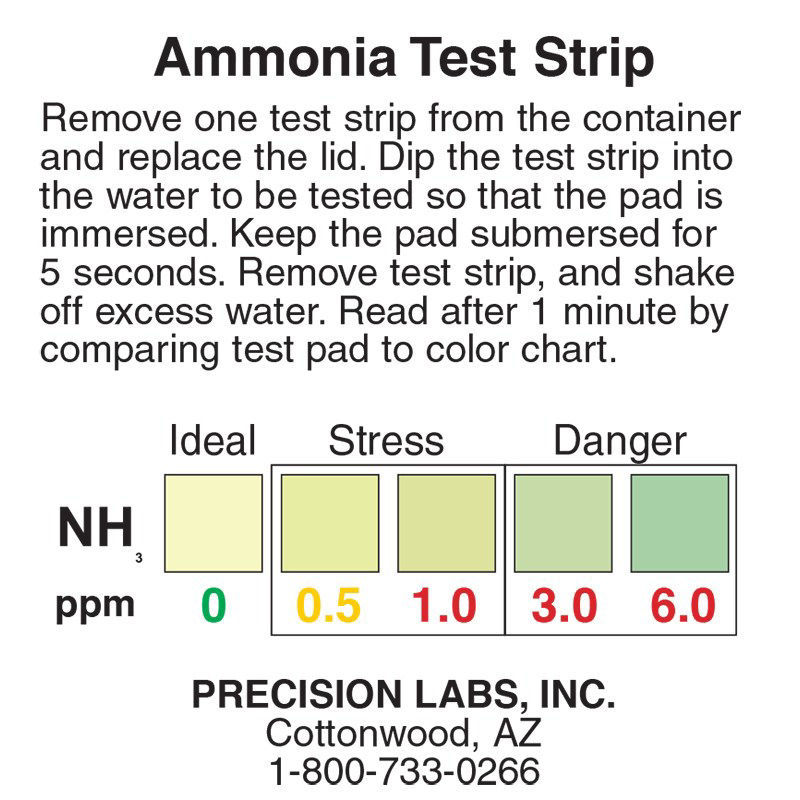Precision Laboratories Ammonia Test Strips
The ammonia test strips are used to test for tank contaminants in aquariums and will detect the presence of ammonification from protein degradation. The chart reads 0 to 6 ppm, 0 ppm being ideal, 0.5 to 1.0 ppm being stressed, and 3.0 to 6.0 ppm being dangerous. The pH indicator pad in the ammonia test strip is constructed to react only to the gaseous ammonia generated by the alkaline environment on the first test pad. The unique construction of the strip reduces, and in some cases eliminates the potential for many interferences, such as CN-, Fe, Mn, Ca, etc.
The strip is composed of two filter pads. The first filter pad acts as an absorbent and takes up the water sample. The first pad has been treated with alkaline materials. This alkaline environment converts any ammonia to the gaseous state.
The second filter pad is an hydrophobic material that has been treated in such a manner that only the gaseous ammonia is absorbed by the second filter pad. The second filter pad contains an indicator(s) capable of detecting the gaseous ammonia through a change in the pH of the filter pad.
You've got questions, we've got answers.
Reach out and let's see what we can do together.

